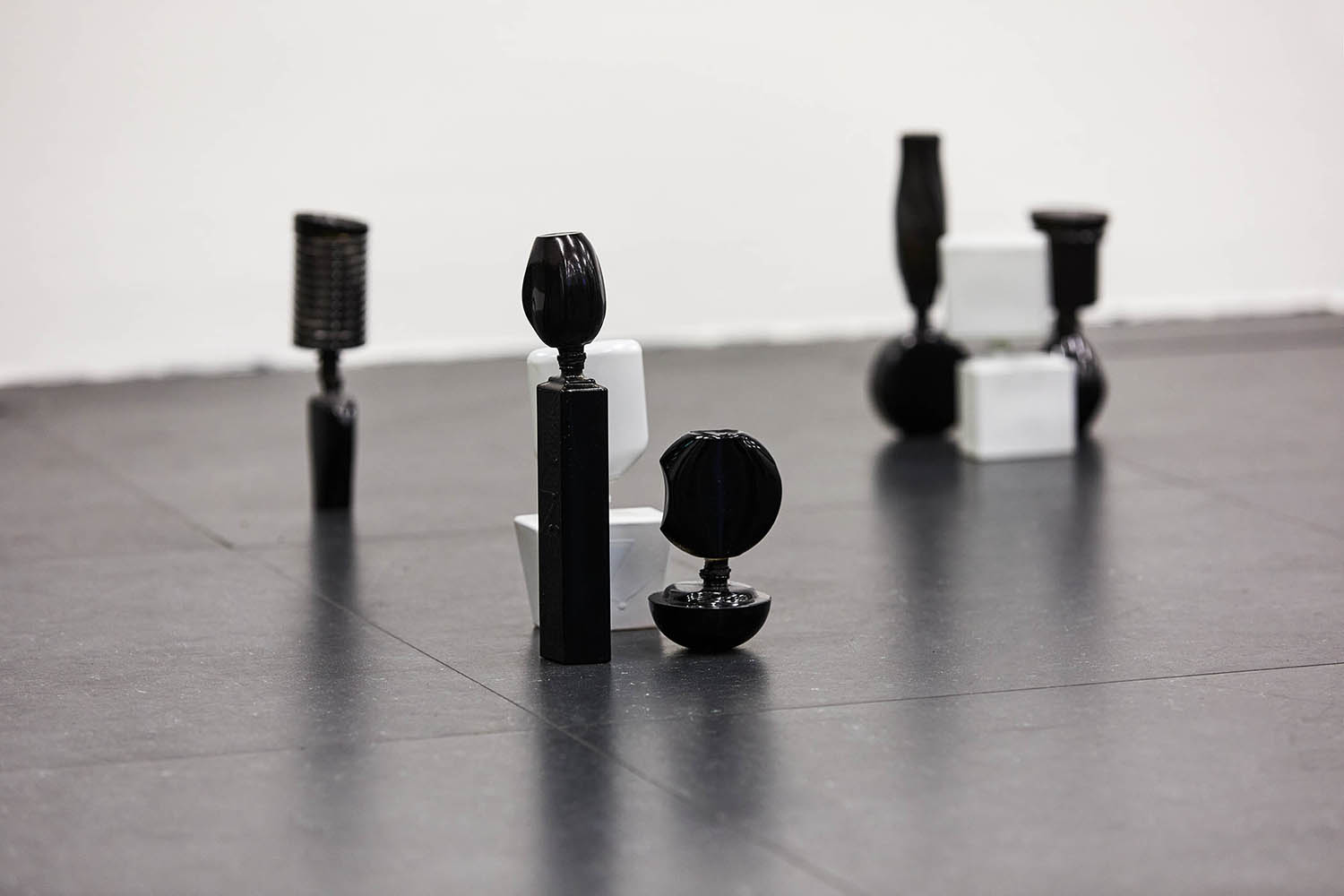Opening, November 15, 2022, 7 pm
Exhibition, November 16 – December 23, 2022
What is the relationship today between the formerly colonized countries of Africa and the so-called Western World? How do economic, political, and last but not least cultural exchanges work, and how are these different levels entangled with one another? Which logics and mechanisms underlie such an interplay? Jojo Gronostay, who grew up in Germany and whose father is from Ghana, tackles questions like these. He is the founder of the brand Dead White Men’s Clothes (DWMC), for example, which is both an art project and a fashion label. The name originates from the Ghanaian expression “Obroni Wawu”: when the first waves of second-hand clothes arrived from the Global North in Ghana in the 1970s as help aid, the clothing was of such a high quality that locals assumed that the previous owner must have died. Since 2017, Jojo Gronostay has been buying used clothing from Kantamanto Market in Accra, the worldwide largest marketplace for second-hand textiles, only to re-introduce them into the Western fashion and art world.
With this cunning system of transfer, Gronostay explores the circulation of goods but also the creation of value. The socio-political issues he raises—for instance, on postcolonialism, identity, and global economic structures—are investigated through photographs, film, installations, or performances, and always in an extremely concise formal language. In his site-specific setting A Hymn Of Eternal Values for Kunstraum Lakeside, Jojo Gronostay employs the hybridity and multifunctionality of the space—designed by Josef Dabernig for project-based presentations—to reconnoiter the intersection of art, business, and technology, which has underpinned the exhibition space’s programming since its founding. By installing a kind of showroom or concept store with mannequins and makeshift shelving for a hypothetical collection of fashion accessories, Gronostay hyperbolizes the architectural characteristics of the Kunstraum, which otherwise lends the impression of an unpretentious exhibition space, functional lecture room, and office.
Hybridity, however, is not only a trademark of the Kunstraum. The individual works that Jojo Gronostay displays in his exhibition, too, are imbued with a fragmentary and disjointed quality, along with moments of bricolage and montage. First off, wieldy little sculptures are scattered across the floor like tiny living creatures. Titled Kreaturen. V right of the Danube and Kreaturen. Woerthersee (2022), the objects—at first glance reminiscent of traditional African sculptures made of ebony—consist of two flacons fused together to form a new figure, which the artist coated with black paint. The constructivist bodies, which expose the material beneath at certain points, incorporate classics such as Jean-Paul Gaultier’s “Le Male” or “Classique”—a male and female glass torso—but also perfume bottles with more abstract forms. The sculptures are complemented by photographs of the objects, which have been cut in the middle and then recombined with other halved images to create new, even more heterogeneous forms.
Like how the vestiges of fragrance clinging to the flacons mingle when the small sculptures are assembled, Gronostay’s sculptural approach can largely be seen as a process of hybridization. In both the sculptures and the photographs, alleged African bodies are juxtaposed with a specific modernist formal language that was developed in Europe in the early 20th century, which employed “art from Africa” as an uncited model for own productions. The colors of the sculptures change with the location of each exhibition: for his new assemblages, Gronostay uses the former favorite objects of flacon collectors from the surroundings of the respective exhibition space. Klagenfurt, for example, has a gray tone. While the bottles in the sculptures are randomly mixed, the objects that appear in the photographs with the series title Perfume Portraits (2022) each come from a specific person, whose initials supplement the title in the style of A.A, M.D, or Z.D. His observations of the consumer culture and subsequent interventions generate portraits of the cities that host the presentation. Imitating the viewpoint of the past century’s colonizers, the artist takes trophies from his expeditions to unknown territories. As the title Kreaturen emphasizes the ambiguity of his hybrid beings, Jojo Gronostay alludes to the fashion industry and its intrinsic vocabulary. Moreover, the exhibition title A Hymn Of Eternal Values derives from the product description of Calvin Klein’s fragrance “Eternity”, an accomplished take on the images and longings that the corporate slogan from the advertising department should evoke in consumers.
As counterparts to the more than 50 little figures that populate Kunstraum Lakeside, which also fulfill mundane functions such as bookends, are two partially black painted mannequins in the window display. These androgynous plastic models from the 1990s made by the company Hindsgaul, which exemplify hybridity not only in their mediated skin color but also on the level of gender, wear suits or parts of suits by the brand DWMC. The same suits can also be seen in the video Rejected and accepted greetings (2022), in which performers demonstrate different forms of touching between human bodies that emerged as greeting gestures during the pandemic and often originate from specific cultural contexts. Jojo Gronostay uses the history of the suit—from the attire of the bourgeoisie, worn to demonstrate power and influence, to the egalitarian uniform, to a piece that today can be found in almost every wardrobe in a wide variety of styles from fast fashion to haute couture—to pose questions about monetary and symbolic value in a global context. The global formulas of making contact featured in the performance epitomize the sense of relatedness in which questions of identity are intertwined in the 21st century.
Jojo Gronostay (b. 1988 in Germany) lives and works in Vienna.
www.jojogronostay.com
www.deadwhitemensclothes.com












